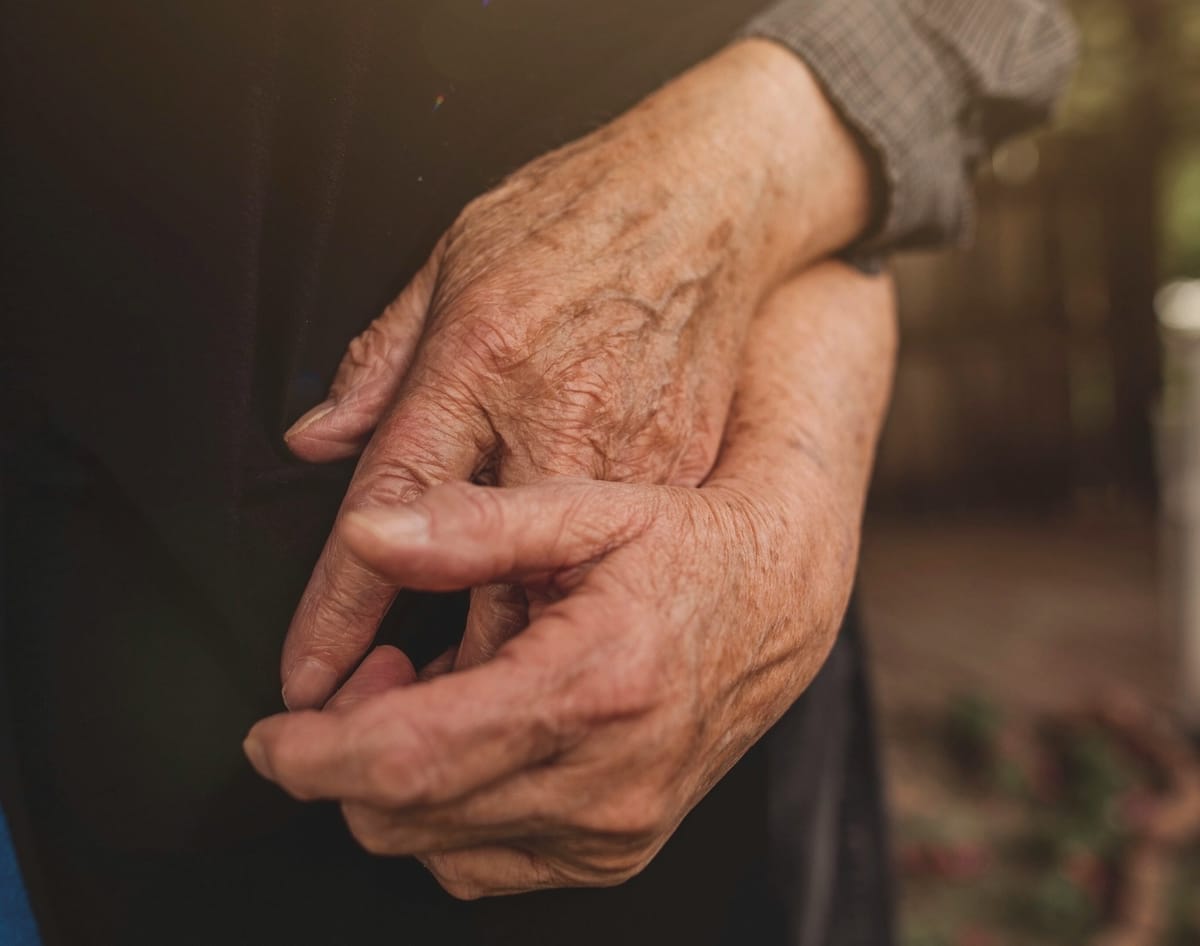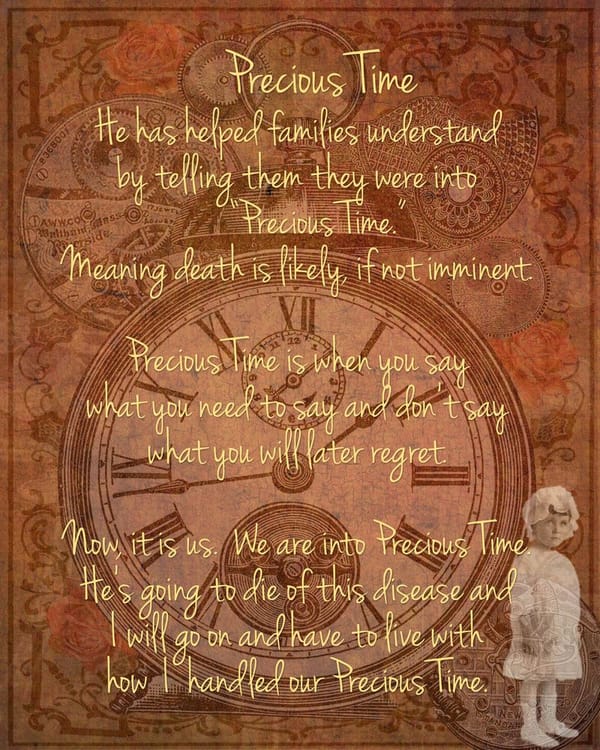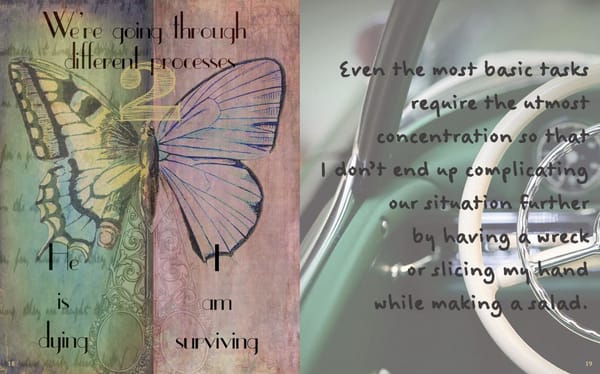Who lives longer on Hospice?

Choosing Comfort: Ms. V’s Journey with Advanced Lung Cancer
Ms. Victoria “V” Reynolds had built a life on determination. A self-made entrepreneur, mother of three, and proud grandmother of five, she had always tackled challenges head-on. When she was diagnosed with metastatic non-small cell lung cancer (NSCLC) two years ago, she approached it with the same resolve—researching treatment options, advocating for herself, and enduring rounds of targeted therapy and chemotherapy with unwavering grit.
At first, the treatments worked. The targeted therapy kept her cancer stable, buying her time and allowing her to continue running her small business. But as the disease progressed, her options narrowed. Second-line chemotherapy had been grueling, leaving her fatigued, underweight, and frequently hospitalized with infections.
Now, sitting in her oncologist’s office with her eldest daughter by her side, she faced another decision. A third-line chemotherapy option was on the table—one that offered only a modest chance of slowing the cancer but came with significant side effects, including nausea, weakness, and a high risk of hospitalization.
Victoria sighed, running her fingers over the bracelet her grandson had made for her. “How much time would it give me?” she asked.
Her oncologist hesitated. “Maybe one to two months, on average,” he said gently.
She thought about those months. Would they be spent in a hospital bed, tethered to IVs? Would she be too sick to taste her daughter’s famous Sunday dinners or watch her grandkids play baseball?
That night, Victoria gathered her family. They talked about what mattered most—not just time, but quality of life. She wanted to be home. She wanted to feel as well as possible for whatever time she had left. The next day, she enrolled in hospice.
Finding Strength in Hospice
With hospice care, everything changed. Her team worked to control her pain and breathlessness with low-dose opioids, easing the discomfort that had made even simple conversations exhausting. They managed her nausea, helped her find ways to eat small meals, and adjusted medications to keep her comfortable without making her feel sedated.
Freed from the side effects of chemotherapy, she slowly regained her energy. She no longer spent her days recovering from treatments or waiting in hospital rooms. Instead, she sat on her back porch, sipping tea while her grandchildren played in the yard. She spent afternoons reminiscing with friends, laughing over stories from her early days in business.
Hospice wasn’t just about medical care—it was about support. A chaplain visited, offering her and her family space to process the emotions of this transition. Her nurse answered questions with compassion, reassuring them that they weren’t alone. Her social worker helped her put final plans in place, ensuring her family would be supported after she was gone.
More Time, More Meaning
Despite her initial prognosis of one to two months, Victoria lived for six months—longer than expected with third-line chemotherapy. But more importantly, those months were full. She never saw the inside of another hospital room. She was present for birthdays, for quiet moments on the couch with her granddaughter, for family dinners where laughter echoed through the house.
When the time came, she passed peacefully at home, surrounded by love.
Victoria’s story is a powerful reminder that more treatment doesn’t always mean more time—and that sometimes, the best choice isn’t fighting harder, but embracing the life that remains.
Hospice Care and Improved Survival in Serious Illness
Contrary to common belief, choosing hospice care does not always mean a shorter life. In fact, for certain conditions, hospice has been associated with longer survival compared to aggressive last-line treatments. Patients often experience fewer complications, reduced hospitalizations, and better symptom management, allowing them to live longer and better. For a full look at WHY, read this blog post by my amazing co-author here.
Congestive Heart Failure (CHF)
Hospice care has been linked to longer mean survival in patients with CHF compared to those who continue disease-directed treatments. A study found that hospice patients with CHF had improved survival compared to those who did not receive hospice care, likely due to better symptom management and reduced hospitalizations. (Connor et al., 2007).
Lung Cancer
Multiple studies suggest that hospice can extend survival in advanced non-small cell lung cancer (NSCLC). One study found that patients with metastatic NSCLC who enrolled in hospice lived significantly longer than those who pursued aggressive treatments late in their disease course (Duggan et al., 2017). Another study demonstrated improved survival among elderly patients with lung cancer receiving hospice care (Saito et al., 2011). Additionally, a population-based study in Taiwan found that hospice care not only extended survival but also reduced healthcare costs for lung cancer patients (Chiang et al., 2015).
Pancreatic Cancer
Patients with pancreatic cancer also show longer mean survival when receiving hospice care compared to those continuing active treatment (Connor et al., 2007). The relief from treatment side effects and improved symptom control likely contribute to this benefit.
Metastatic Melanoma
Even in aggressive cancers like metastatic melanoma, hospice has demonstrated a survival advantage. Patients who received hospice care for at least four days lived longer than those who had less or no hospice involvement (Huo et al., 2014).
These findings challenge the assumption that more treatment always means more time. For some patients, stepping away from aggressive interventions and focusing on comfort can provide not only a better quality of life—but a longer one, too.
Why Does Hospice Improve Survival?
The idea that hospice can extend life might seem counterintuitive, but it makes sense when we examine the reasons why:
- Avoiding Harmful Side Effects: Last-line treatments often come with severe toxicity that weakens the body more than the disease itself.
- Reducing Hospitalizations: Frequent ER visits and hospital stays can accelerate decline, whereas hospice provides in-home support to prevent crises.
- Focusing on Comfort and Stability: Pain control, symptom management, and emotional support improve overall well-being, allowing the body to function better.
Choosing Quality—and Quantity—of Life
These findings challenge the assumption that more treatment always means more time. For some patients, stepping away from aggressive interventions and focusing on comfort can provide not only a better quality of life—but a longer one, too.
If you or a loved one are facing a serious illness, consider discussing hospice care as an option. It’s not about giving up—it’s about making the most of the time you have. If you or a loved one wants to learn more about hospice services, you can request them directly without a referral from your physician. Find your local hospice here: Hospice Finder
"It is not the length of life, but the depth of life."
— Ralph Waldo Emerson





